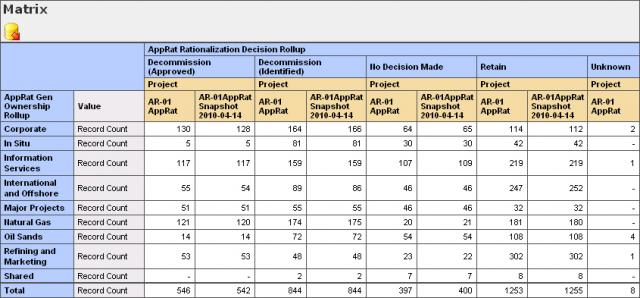 Hmm…where is that Flying DeLorean I ordered, anyway?
Hmm…where is that Flying DeLorean I ordered, anyway?
Remember Back to the Future? Great movie. Wouldn’t it be amazing if you could shift Project Management back through time and see exactly how things looked back then? Although lots of PPM Software packages have auditing — after all, no one likes mismatched SOX — wading through a laundry pile of data edits to reconstruct what your Project was wearing at the time is no way to spend a Friday night.
I think Google Maps is onto the right idea. They’ve worked out a way to let you view a geographical location as you slide through time. And a few years back, I built a custom budgeting database that did something similar.
We called it Time Slicing. Every Friday at noon, a routine took a Snapshot of all of the Projects in the budget and saved them collectively as a Time Slice. Whenever our users ran variance reports, they could compare any two Time Slices. They’d often run the current budget against the previous week, but would sometimes run Q1 against Q2, or perhaps the current date against same date the year previous. The contrasts were amazing! They could literally follow the money as the budget migrated from one geographical area to a hotter one.
I hadn’t thought about that budgeting application in quite a while, but it came up last month.
I’ve been advising a team that uses Workfront as their Online Project Management Software. Their goal is to rationalize all business applications (e.g. Word, Excel, etc.) as two huge Oil & Gas companies merge. There are over 4400 applications across 8 major business units. Ultimately, each application has to be either Retained, Consolidated, or Decommissioned; although at the moment, there are still several Apps that are Unknown. It’s hard to digest that much data. To help them with work management, they asked if I could find a way to compare this week vs last week…in other words: Time Slicing.
In the end, thanks to some timely coaching from Workfront, we figured out a solution. Here’s an example of our AppRat Matrix Report, which shows how the Decisions have progressed in the past week, by Major Business Area:

There were a few tricks to get it all going:
Set Up the Custom Data
- The 4400+ Apps were being tracked in Workfront as Tasks under a single project called AR-01 AppRat.
- Each task has a custom category behind it with parameters that note the current state of the decision on the App (e.g. Retain), and to which major business unit the App belonged (e.g. Corporate).
- Both dimensions can slowly change over time.
Create a Snapshot Status
- Workfront allows users to define their own Custom Status codes.
- I called mine “Snapshot”, and based it on the “Dead” Status, to hide it on searches, and to prevent inadvertent edits of the historic data.
Create a Snapshot Group
- I created a new Group called “Snapshot”. Surprised?
- The Group has NO users assigned it.
Copy the Current Project (Weekly)
- Each Wednesday at noon, I copy the AR-01 AppRat Project.
- My naming convention for the copy is AR-01 AppRat Snapshot YYYY-MM-DD.
- I also set the Status to “Snapshot” along the way.
- I then edit the copy and set its Group to the “Snapshot” Group.
- Since normal users can only see their Home Group Tasks, when they use the quick find in Workfront (i.e. the top right drop down), Workfront prevents them from accidentally finding the old Snapshot versions of the Tasks.
Archive Previous Snapshots (Weekly)
- By convention, I rename any previous Snapshots to AR-OLD AppRat Snapshot YYYY-MM-DD.
- This removes them from the Matrix, but keeps them around in case I ever decide to do multi-snapshot reports.
Build the Matrix Report
- The screen shot above was just a normal Workfront matrix report.
- The main trick was that the Filter says where Project Name Contains AR-01, which excludes the AR-OLD Snapshots.
- From there, it was just a matter of grouping by Decision, by Project Name (which gives the comparison column), by major business unit.
- I also tied the report to a user with enough rights in their Access Level to see both the Current and the Snapshot tasks.
The result? When the team logs into Workfront, they now have an easy to read comparison of where they’re at, and where they were, all in real time. Although it’s not flying DeLorean, the Snapshot technique I described has helped our team visualize their progress over time, without having to sift through audit information or keep a second set of books for historic comparisons. With Time Slices now at hand, there are sure to be many other interesting insights.
I hope I’ve given you some, too.
